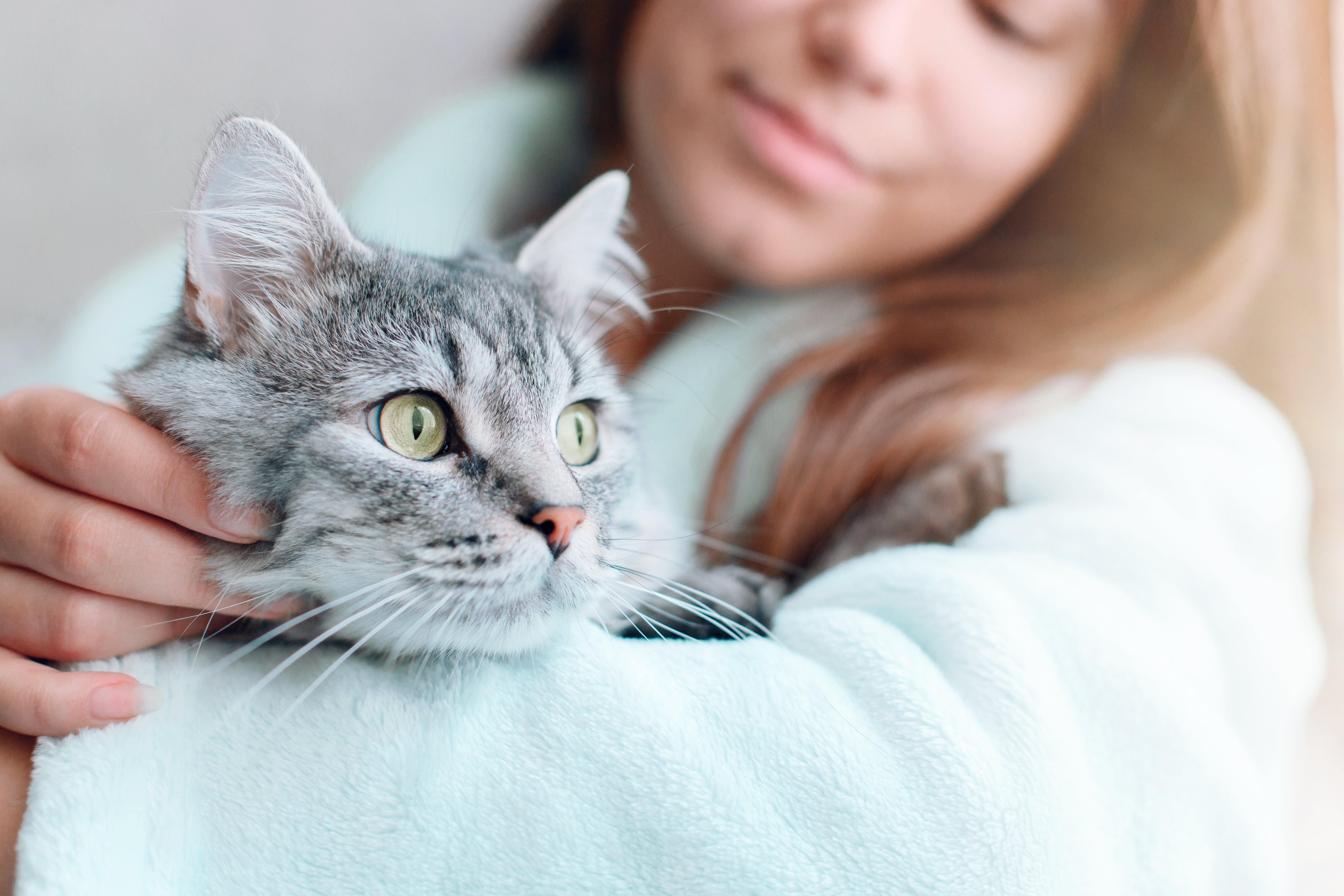How real-life veterinarians are thinking about treatment differently.
The rise and impact of diabetes in humans is well documented, and there has been significant research and advancements to treat this condition. However, feline diabetes, which impacts approximately 600,000 cats in the U.S.1,2, receives less attention. This disease can be devastating for the affected felines and their owners, but recent innovation in animal health is helping. What better time to build awareness for this condition in cats, and new treatment options, than during National Diabetes Month in November?
Picture this: a veterinarian is faced with a distressed owner who has a beloved cat who is losing weight and is less active. It also seems to be hungrier, thirstier and needs to urinate more than usual. Testing then confirms the diagnosis of diabetes, which in the past, initiated a tough conversation about the treatment options and potential complications. Like treatment for human diabetes, feline diabetes typically requires twice-daily insulin injections with needles and frequent dosing changes. This leads 62%3 of pet parents to state that feline diabetes is hard to treat, mostly due to dosing requirements and uncooperative pets.
Feline diabetes is a disease in which too much glucose (sugar) accumulates in the blood. Sugar is an important source of energy for the cells. Most cats with diabetes have high blood sugar because they are resistant to the effects of insulin, which in turn reduces their body’s ability to use the glucose in the blood for energy. This can result in discomfort and lethargy for cats, not to mention the possibility for organ damage from elevated blood glucose levels. Left untreated, diabetic ketoacidosis, a potentially fatal complication, can occur. Diabetes is a chronic illness that requires continued, lifelong medical care and owner education to prevent complications and ensure good quality of life.
Research shows 125,000 cats go untreated3, due in part to a lack of awareness about diabetes and the signs to watch for in cats. A simple way to remember the signs of feline diabetes is to think M.E.O.W:
- M: More drinking and urinating
- E: Excessive appetite
- O: Overweight
- W: Weight loss that occurs suddenly
The M.E.O.W. signs could be an indicator of serious disease in your cat, such as diabetes. But now, working with a veterinarian on a treatment plan for a cat newly diagnosed with diabetes doesn’t need to be overwhelming or uncomfortable. With Bexacat™ (bexagliflozin tablets), the first needle-free, insulin-free, once-daily tablet, veterinarians can now prescribe newly diagnosed cats not previously treated with insulin an alternative way to treat feline diabetes. Bexacat lowers blood sugar by increasing urine excretion of glucose through inhibition of sodium-glucose cotransporter 2 (SGLT2) and results in effective glycemic control, as well as improvement in the clinical signs of diabetes.
Feline diabetes doesn’t have to prevent your cat from thriving. Hear how real-life veterinarians are thinking about treatment differently now.
“It’s really about the human-animal bond,” said Dr. Michael Breer, Senior Director, US Pet Health Consulting Veterinarians at Elanco. “When developing treatment options for pet owners, we need to consider the paradigm shift that has taken place over the past few years. More than ever, our pets are part of the family. People are apprehensive about using needles to inject their pets with medication. Bexacat integrates seamlessly into the busy lifestyle of pet owners and provides a needle-free approach to managing diabetes in cats.”
“By providing an oral tablet, Bexacat seeks to improve convenience and increase compliance rates,” said Dr. Cynthia Ward, VMD. “Bexacat can improve quality of life and help owners feel more comfortable with daily treatment.”
“I think Bexacat is just another great tool to have in your toolbox to treat feline diabetes,” said Dr. Kevin Barcus of Mounds View Animal Hospital. “Bexacat is our first choice. It has made clients choosing to treat their diabetic cats a little bit easier and a little bit less intimidating.”
It’s important to recognize the signs of feline diabetes early and start a conversation with your veterinarian. By regularly visiting your veterinarian for checkups, you’re building a health portfolio for your cat that helps professionals identify concerns before they’re a major problem – leading to early detection and course-correcting guidance. If your cat is showing M.E.O.W. signs, visit your veterinarian for a full examination and diagnosis. Ask your veterinarian about treating diabetes in cats with Bexacat, the once-daily tablet.
Learn more about Bexacat here.
Indication:
Bexacat is indicated to improve glycemic control in otherwise healthy cats with diabetes mellitus not previously treated with insulin.
Important Safety Information:
Before using this product, it is important to read the entire product insert, including the boxed warning. See package insert for full prescribing information. Cats treated with Bexacat may be at an increased risk of diabetic ketoacidosis or euglycemic diabetic ketoacidosis, both of which may result in death. Development of these conditions should be treated promptly, including insulin administration and discontinuation of Bexacat. Do not use Bexacat in cats with diabetes mellitus who have previously been treated with insulin, who are receiving insulin, or in cats with insulin-dependent diabetes mellitus. The use of Bexacat in cats with insulin-dependent diabetes mellitus, or the withdrawal of insulin and initiation of Bexacat, is associated with an increased risk of diabetic ketoacidosis or euglycemic diabetic ketoacidosis and death. Sudden onset of hyporexia/anorexia, lethargy, dehydration, diarrhea that is unresponsive to conventional therapy, or weight loss in cats receiving Bexacat should prompt immediate discontinuation of Bexacat and assessment for diabetic ketoacidosis, regardless of blood glucose level. Bexacat should not be initiated in cats with pancreatitis, anorexia, dehydration, or lethargy at the time of diagnosis of diabetes mellitus, as it may indicate the presence of other concurrent disease and increase the risk of diabetic ketoacidosis. Due to risk of severe adverse reactions, do not use Bexacat in cats with evidence of hepatic disease or reduced renal function. Consult a physician in case of accidental ingestion by humans.
Bexacat, Elanco and the diagonal bar logo are trademarks of Elanco or its affiliates. ©2023 Elanco or its affiliates. PM-US-23-2050
1. Feline Diabetes | Cornell University College of Veterinary Medicine
2. AVMA 2022 Pet Ownership and Demographic Sourcebook
3. Elanco Animal Health. Data on file.

